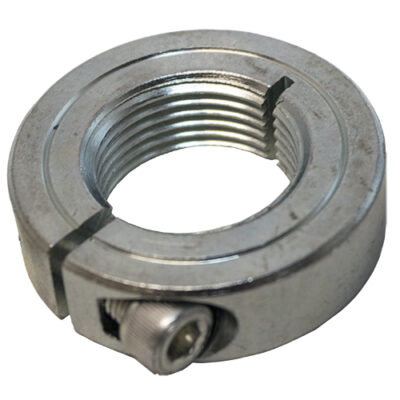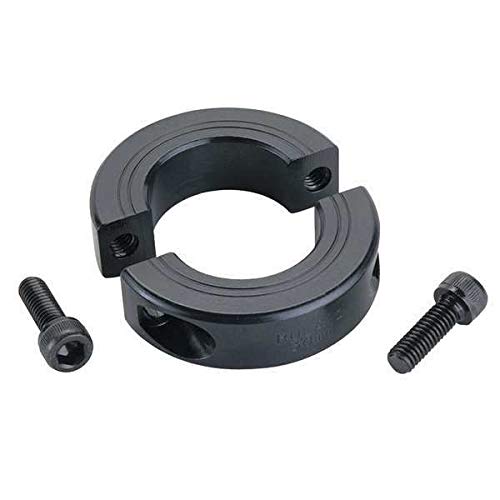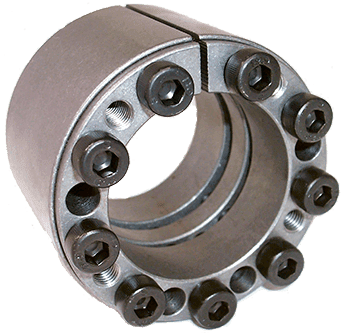Product Description
Why choose us? What can we do for you?
♦ Founded in 1992.
♦ Management system certification:ISO9001.ISO14001.TSI16949.
♦ We have our own technical and mould deparmtent, ready for any customized products.
♦ Sales network expands from over domestic sales to all over the world.
Products Description
Any requirements or question,welcome to “Send”us an e-mail Now!!!
It’s our great honor to do services for you! You also can get the FREE SAMPLES soon.
|
Item Name: |
CV Joint Boot Quick Lock Clamp |
|
Application: |
Auto Transmission Shaft |
|
Size: |
*Length*Width : 10 inches*7mm(Small Band) *Length*Width : 19 inches*10mm(Large Band) |
|
Material Available: |
Stainless Steel |
|
Advantage: |
Made of high quality material, durable and practical to use |
Packing and delivery
More Product Recommendations
We have 30+ years of production experience, the best quality and the price can be assured, pls contact us freely,we will reply to you immediately!
About us
Exhibitions
Every year we john 4-5 oversea fairs to meet our customers.What we show is our ability, and what you feel will be our profession . We take the time to answer questions and ensure that our clients understand all there is to know about our products.
Certificate
FAQ
1. Q: How about the payment terms?
Normally 30% deposit in advance. It can be discussed when we have friendly relationship.
2. How about Delivery time?
We can produce 350,000 pcs per month, large capacity. Normally, 15 days.
3. Q:Can I get a sample?
For sure, we are willing to supply samples free for quality checking.
4. Q : What’s the price?
Reasonable price, competitive price, and acceptable prices, which are all based on good quality.
Any requirements or question,welcome to “Send” us an e-mail Now!!!
| Material: | Stainless Steel |
|---|---|
| Usage: | CV Boot Band Clamps |
| Structure: | Band Clamps |
| Customization: |
Available
| Customized Request |
|---|
.shipping-cost-tm .tm-status-off{background: none;padding:0;color: #1470cc}
|
Shipping Cost:
Estimated freight per unit. |
about shipping cost and estimated delivery time. |
|---|
| Payment Method: |
|
|---|---|
|
Initial Payment Full Payment |
| Currency: | US$ |
|---|
| Return&refunds: | You can apply for a refund up to 30 days after receipt of the products. |
|---|
Can I get recommendations for cost-effective shaft clamps for different budget constraints?
Yes, recommendations for cost-effective shaft clamps can be provided based on different budget constraints. Here’s a detailed explanation:
When selecting shaft clamps, it’s important to consider both the cost-effectiveness and the specific requirements of your application. Here are some recommendations for cost-effective shaft clamps across different budget constraints:
1. Low Budget:
If you have a limited budget, there are cost-effective options available that still provide reliable performance. Consider clamps made from materials like aluminum or steel, as they are commonly more affordable compared to exotic alloys or specialized materials. Look for clamps with simple designs that offer basic functionality without unnecessary features. Additionally, consider clamps from reputable manufacturers that offer competitive pricing for their products.
2. Mid-Range Budget:
With a mid-range budget, you have more options to choose from without compromising on quality. Look for shaft clamps made from high-quality materials such as stainless steel or alloy steel. These materials offer good strength and durability while maintaining a reasonable cost. Consider clamps with additional features such as adjustable tightening mechanisms or corrosion-resistant coatings, as they can enhance performance and longevity.
3. Higher Budget:
If you have a higher budget, you can explore shaft clamps with advanced features and materials that offer enhanced performance and durability. Look for clamps made from specialized alloys or materials designed for specific environments or applications. These clamps often have superior mechanical properties and corrosion resistance. Consider clamps with innovative designs that offer improved functionality, such as quick-release mechanisms or integrated vibration damping features.
4. Custom Solutions:
In some cases, custom shaft clamps may be the most cost-effective option. Working with a reputable manufacturer or engineering firm, you can collaborate to design a shaft clamp that precisely meets your requirements while optimizing cost. Custom clamps allow you to choose the most suitable materials, features, and dimensions for your specific application, ensuring an optimal balance between performance and budget.
When selecting shaft clamps based on budget constraints, it’s important to strike a balance between cost and quality. Consider factors such as the expected lifespan of the clamp, the criticality of the application, and any specific environmental or operational conditions. Always prioritize reliability, performance, and safety over cost savings alone.
It’s recommended to consult with suppliers, manufacturers, or industry professionals who specialize in shaft clamps to get specific recommendations based on your budget constraints and application requirements. They can provide valuable insights and help you identify cost-effective options that meet your needs.
What are the design considerations when using shaft clamps in machinery?
When using shaft clamps in machinery, several design considerations should be taken into account to ensure proper functionality and performance. Here’s a detailed explanation:
1. Shaft Diameter and Tolerance:
The shaft clamp should be designed to accommodate the specific diameter of the shaft it will be clamping. It’s important to consider the shaft’s dimensional tolerance and ensure that the clamp provides a secure and snug fit without excessive play or binding.
2. Clamping Force:
The clamping force exerted by the shaft clamp should be appropriate for the application. Sufficient clamping force is necessary to securely hold the shaft in place and prevent any axial or rotational movement. However, excessive clamping force can lead to deformation or damage to the shaft or other components. The design of the shaft clamp should strike a balance between providing adequate clamping force and avoiding excessive stress on the shaft.
3. Material Selection:
The material used for the shaft clamp should be carefully chosen based on the specific requirements of the application. Factors to consider include mechanical properties, corrosion resistance, and compatibility with the shaft and surrounding components. Common materials for shaft clamps include steel, aluminum, and various alloys. The selected material should provide sufficient strength and durability while considering factors such as weight, cost, and environmental conditions.
4. Alignment and Centering:
Proper alignment and centering of the shaft clamp are essential for the smooth operation of the machinery. The design should ensure that the clamp aligns the shaft concentrically and accurately with other mating components. Misalignment can lead to excessive vibration, increased wear, and potential damage to the machinery.
5. Accessibility and Maintenance:
The design of the shaft clamp should take into consideration the accessibility of the clamp for installation, adjustment, and maintenance purposes. Adequate space should be provided to allow for easy access to the clamp and the tightening mechanism, ensuring convenient and efficient maintenance procedures.
6. Shock and Vibration Resistance:
In applications where shock or vibration is present, the design of the shaft clamp should incorporate features to withstand these dynamic forces. This may involve the use of damping materials, such as elastomers or rubber inserts, to absorb and mitigate the effects of shock and vibration on the clamp and the shaft.
By considering these design considerations, engineers can ensure that the shaft clamps in machinery are properly designed and optimized for their intended applications. This promotes reliable and efficient operation while minimizing the risk of shaft slippage, misalignment, or other issues that could compromise the performance and safety of the machinery.
What is a shaft clamp, and how does it differ from other shaft fastening methods?
A shaft clamp is a type of fastening device used to secure components onto a shaft. It differs from other shaft fastening methods in its design and mechanism of operation. Here’s a detailed explanation of what a shaft clamp is and how it differs from other shaft fastening methods:
A shaft clamp is typically a two-piece device consisting of a collar and a clamping mechanism. The collar is a ring-shaped component that fits around the shaft, while the clamping mechanism is used to tighten the collar securely onto the shaft. The clamping mechanism can vary depending on the specific design but often includes screws, bolts, or levers that apply pressure to the collar, creating a tight grip on the shaft.
One key difference between a shaft clamp and other shaft fastening methods is the ease of installation and removal. Shaft clamps are designed to be easily installed or removed without requiring specialized tools or equipment. The clamping mechanism allows for quick adjustments and secure tightening of the collar onto the shaft, ensuring a reliable grip.
Compared to other shaft fastening methods such as set screws or keyways, shaft clamps offer several advantages:
- Easy Adjustability: Shaft clamps provide the ability to easily adjust the position of components along the shaft. The clamping mechanism allows for precise tightening or loosening of the collar without damaging the shaft or the component being secured. This adjustability is particularly useful in applications where component alignment or positioning needs to be fine-tuned.
- No Shaft Damage: Unlike set screws, which can cause indentation or damage to the shaft, shaft clamps distribute the clamping force more evenly around the shaft circumference. This helps to prevent shaft damage while ensuring a secure grip. It is especially beneficial when working with softer or delicate shaft materials.
- Reduced Slippage: Shaft clamps provide a reliable and secure grip on the shaft, minimizing the risk of slippage or movement of the secured components. The clamping mechanism applies even pressure around the collar, creating a uniform grip along the shaft circumference. This feature is advantageous in applications with high torque, vibration, or dynamic loads.
- No Shaft Modification: In contrast to keyways or other methods that require shaft modification, such as drilling or milling, shaft clamps can be easily installed on standard shafts without the need for any modification. This preserves the integrity of the shaft and allows for reversibility if needed.
- Wide Range of Sizes and Designs: Shaft clamps are available in various sizes, materials, and designs to accommodate different shaft diameters and application requirements. They can be found in materials such as steel, stainless steel, aluminum, or plastic, offering flexibility in terms of strength, corrosion resistance, or weight considerations.
It is important to note that the selection of the appropriate shaft fastening method, including shaft clamps, should be based on the specific application requirements, load conditions, and compatibility with the components being secured. Consulting with shaft collar manufacturers, engineers, or industry experts can help in determining the most suitable fastening method for a particular application.
editor by CX 2023-10-27




